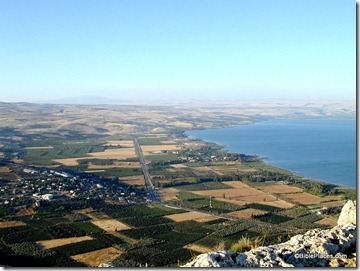For the year that just concluded, this blog had 331 posts. We have now blogged here for five full years. The blog categories with the most posts are:
#1: Jerusalem
#2: Discoveries
#3: Resources
Yesterday we listed the top stories related to discoveries and technology. Today we conclude with three additional categories. Yesterday’s disclaimers apply here as well.
Significant Stories in 2010:
Fishing Banned in Sea of Galilee
Hurva Synagogue Dedicated (and photos)
Israel Imported Honeybees from Turkey (and here)
Qeiyafa Inscription Translation by Galil
Renovated Archaeology Wing of Israel Museum Reopens
Noteworthy Posts:
New Paleo-Hebrew and Greek Fonts
Rachel’s Tomb: The Bible vs. Tradition
Palestine Park, Chautauqua, New York
The Dating of Mazar’s Wall (also here and here and here)
My Favorite (Old) Travel Resources
2010 Excavation Blogs
Favorite Resources in 2010:
Biblical Turkey: A Guide to the Jewish and Christian Sites of Asia Minor
A Visual Guide to Gospel Events
The Dead Sea Scrolls: A Full History
Carta Collection for Accordance
Review of the American Colony Collection
My Essays Elsewhere:
A New Theory on the Death of Herod Agrippa I
Does the Merneptah Stele Contradict Archaeology?
The Palace of David: A Flawed Proposal
As 2011 begins, we wish you all the best in the coming year.
